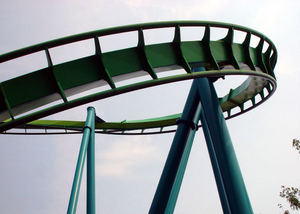- Free Initial Consultation: (954) 761-3641 Tap Here To Call Us
Expert Opines Park Partially to Blame in Roller Coaster Death
Recently, a fifth-grade teacher was killed at an Ohio amusement park after he entered a restricted area to retrieve his cell phone, which had fallen from his pocket while riding a roller coaster.

In the wake of the accident, many were sharply critical of the victim, saying he should not have been in the restricted area and the blame for his death is his own.
While it may be true victim shares some portion of the liability for his own death by entering an area that was restricted, an expert in human factors and ergonomics recently opined to a local newspaper that this tragedy could have almost certainly been prevented with a few relatively inexpensive modifications to park security and policy. more Although this incident happened in Ohio, it’s worth the attention of our Fort Lauderdale injury attorneys because Florida is home to many popular amusement parks containing roller coasters and similar thrill rides.
In a case like this, it’s important to note that under Florida law, the existence of comparative fault is not a bar to recovery of damages. So for example, even if this patron was 99 percent to blame for what happened, his family could still collect damages from the park if it was found to be 1 percent at fault. However, the total damages would be reduced by 99 percent.
But if the expert who spoke to this newspaper is correct, the share of fault may not be so disparate, particularly if it could be shown the risk to guests was foreseeable and easily preventable.
To understand his assertion, you must first understand the ride. It’s what is known in the industry as an “inverted roller coaster.” It can be deceiving to guests because while the track sits high above the ground – 11 to 12 feet at its lowest – the actual clearance when there is an oncoming train is only 5 or 6 feet. This is more than enough to easily strike a person directly below it.
This expert testified in another trial in 1998 in California, where a man entered a restricted area to retrieve his wife’s hat and was killed by an oncoming roller coaster. It was the same type of inverted ride as this one.
Even though in both cases the riders entered restricted areas, the expert indicated that the warning signs posted are not explicit enough. They say things like, “Authorized Personnel Only” or “Restricted Area – Do Not Enter.” Instead, the expert suggested a warning sign that says something like, “Moving Rides Can Kill. Keep Out.”
Another relatively simple fix would be erection of a higher fence around the perimeter. If a fence is only 5 feet tall, it’s relatively easy to hop over. A fence that is 10 or 12 feet tall would be more likely to keep people out. Fence inserts would also help, he said. So too would providing secure bins for people to leave their belongings in before they go on the ride – bins that could everything from keys to flip-flops to cell phones. Finally, he suggested that parks make it known to guests that items lost on rides aren’t going to be retrieved by staff until after the park closes. That would in turn make them less likely to take valuables on the ride.
Call Fort Lauderdale Injury Attorney Richard Ansara at (954) 761-4011. Serving Broward, Miami-Dade and Palm Beach counties.
Additional Resources: Expert says Cedar Point, not roller coaster rider, bears much of the blame in park death, August 20, 2015, By Susan Glaser, The Plain Dealer More Blog Entries: NTSB Releases Report on Fatal I-75 Crash, Aug. 3, 2015, Fort Lauderdale Injury Attorney Blog













